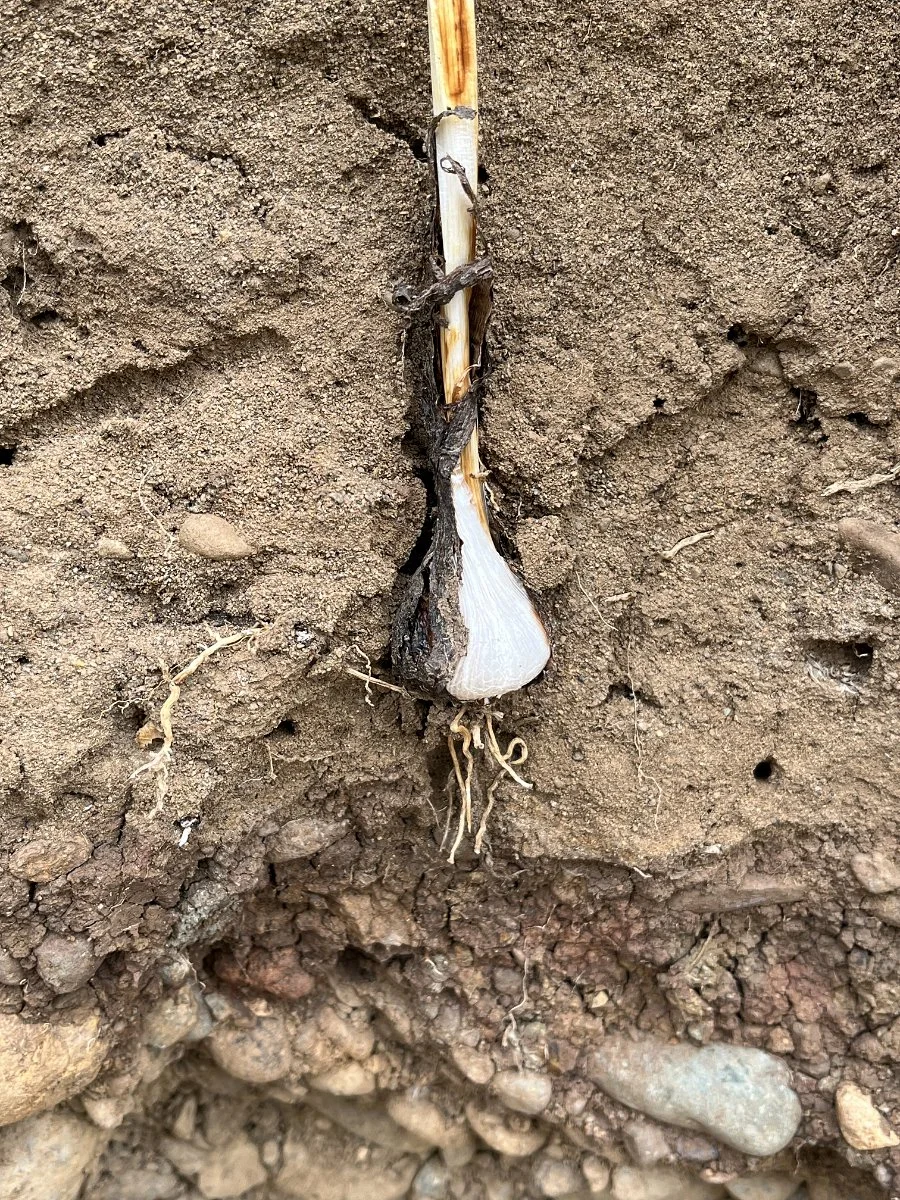Erosion of the bank has exposed some camas growing along the edge of the river. It is interesting to see how far down in the ground the bulbs are. I measured this one and it was around a foot below the surface. Camas bulbs have contractile roots which are able to expand and contract, drawing the bulb downward. This secures the bulb and allows it to access nutrients and moisture deeper in the ground. This also protects it from easily being dug up for food by predators and from being damaged by fire.
Camas is very nutritious and was a staple part of the diet of many indigenous tribes of the area. The bulbs were cooked in earthen pit ovens to transform the starchy plant fiber inulin into fructose. They were eaten directly or processed into cakes, dried and stored for food during the winter.



